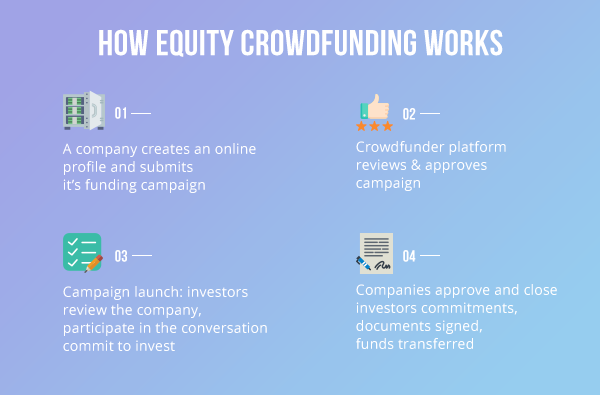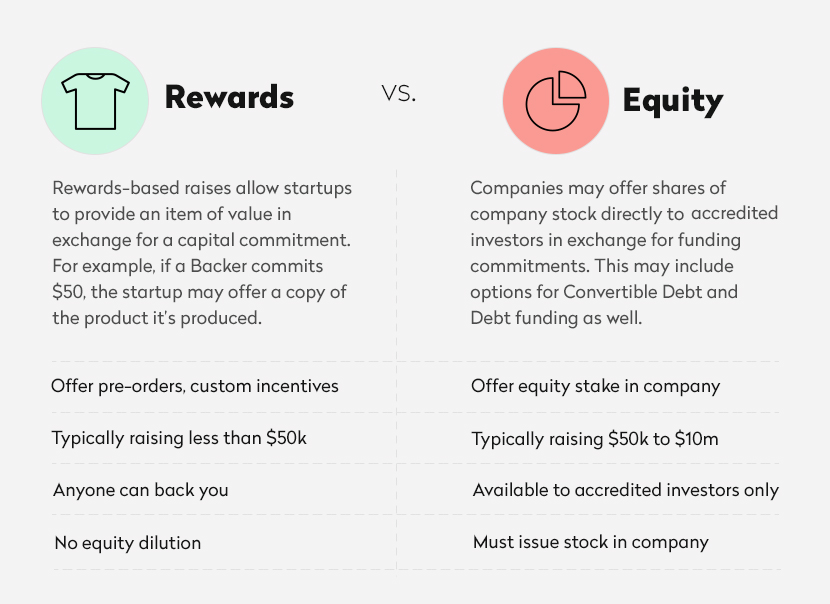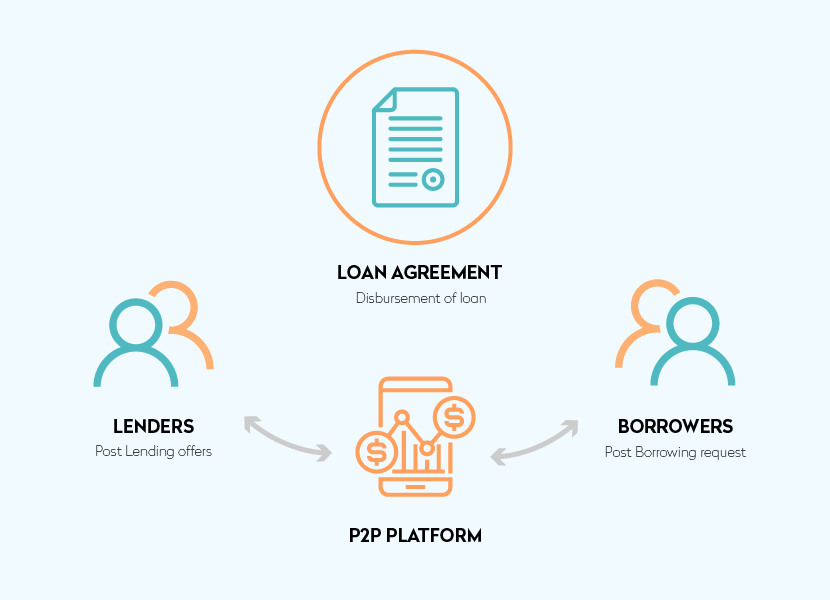That’s the age when crowdfunding hits its peak. It’s that time when many thirsty for successful entrepreneurs choose this alternative financing option over the traditional way to raise seed capital for their business.
Have you wondered why they look for greener pastures and consider all major types of crowdfunding platforms before making first steps?
Fact: nowadays crowdfunding is a great opportunity to completely substitute or complement a conventional form of funding coming from regular financial organisations.
However, with so many different types of crowdfunding, it’s easy to get confused when deciding what the best fit for your business is.
Let’s look at the current state of UK crowdfunding market and see what the prevailing types of crowdfunding sites are. Among all the types of crowdfunding on the CrowdingIn portal, 42% are focused on peer to peer loans, 31% offer equity-based projects, donation crowdfunding accounts for 23%, and rewards-centred platforms constitute 22%.
These are the four crowdfunding models.
Sometimes, experts excuse donation-based portals from the list of crowdfunding variants.
We decided to elaborate on it as well and cover all the most popular crowdfunding types to let you choose easily.

Ever wondered how do crowdfunding platforms make money?
As usual, before you go all in, it’s necessary to do the homework to know what types of crowdfunding investors exist and figure out which one of crowdfunding business models would best suit your daring project.
So let’s get straight to it.
What you will learn:
Equity crowdfunding: a backer owns a part of the project
Equity Crowdfunding is among the most popular types of crowdfunding campaigns; it’s a way the companies not listed on a stock market get the money from a number of people who believe in the early idea of a product or a service.
To kickstart a business, a shareholder choosing to support the startup has partial ownership of a venture and expects to get the returns if the business bears fruit.
Therefore, entrepreneurs considering different types of crowdfunding while looking for a chance to get their startup up and running, sell a slice of the pie to one or multiple investors that decided to back up the business.
Often, the initial investment could be less than $1K.
So far, companies that made traction in this space are well-known FundersClub supporting trusted startups from Bay Area and not only, CrowdFunder deals with VC-backed private early-stage startups and EquityNet that, apart from seed funds seekers, serves the needs of businesses looking for debt financing and royalty capital.
That’s the usual workflow you’d need to account for if you decide to build your own crowdfunding platform that offers equity investments:

If you decide to go for this crowdfunding model and disregard other types of crowdfunding, your audience will be pre-seed, actual seed and early-stage VCs and will include startups that are ready to disclose their numbers for potential backers to consider when weighing their options.
Note, every investor, once committed to the campaign, owns a chunk of the company he decided to back up, so it’s different from donor-based crowdfunding and the rest of the types of crowdfunding campaigns.
They say this kind of most popular crowdfunding types would best suit companies that have already been around the corner for some time.
Therefore, they choose such type of crowdfunding to launch a campaign in order to scale their business and are ready to give away a significant amount of the shares to the public.
If you’ve made up your mind that the equity crowdfunding business model will be ideal for you, look at its benefits and limitations.
Positive effects
- comparing with crowdlending, you can raise a sufficient seed capital that will cover your current and future needs;
- equity financing fosters a company’s development;
- you’re not obliged to make repayments as it happens in case of loans thus you can elaborate a well-thought-out growth strategy;
- with angels’ business network, connections, and expertise you’re likely to attract more backers and become recognisable;
- sometimes, investors may become guarantors in debtor-creditor relations.
Challenges
- there is a risk of losing control as you may have to give the reins of power to other stakeholders;
- once they have taken a stake in a startup, investors are entitled to get returns from a profit generated by a project;
- raising funds by this method may be tedious and time-consuming if you don’t have an appealing proposal and a detailed business plan;
- in different countries, there are caps that limit the amount of money you can collect: in the UK and Europe it is €8 million and in the US it is $1 million per year;
- be ready to pay fees charged by different types of crowdfunding platforms for their services.
Reward-based crowdfunding: donation gets a backer a promised product
Choosing this model, you will deal with entrepreneurs that want to launch a campaign to scoop money into an idea. So the whole project or initiative is kind of “raw and revenue model for crowdfunding is experimental.
Supporters of such campaigns typically get an opportunity to pre-purchase the product at attractive prices as a part of marketing promo.
The main difference from the previous type of the platform is entrepreneurs do not give their shares for sale but bring onboard potential customers and early followers.
A typical scenario for an entrepreneur would be to create a minimum viable product and offer it to the certain types of crowdfunding investors called supporters in order to test the waters and figure out if a fully-fledged offering would make sense in the long run.
Among all the types of crowdfunding campaigns, consider rewards-based crowdfunding as a pre-launch of the actual product: your clients would use it to either pitch a semi-finished product or finance another line of already existing businesses.
Often times, companies that gather the sum needed to create a beta version of their product still fail and go broke due to a number of reasons, e.g., troubles manufacturing an MVP that would meet the expectations of excited early adopters and similar types of crowdfunding investors searching for ways of passive income.
Overall, reward-based crowdfunding is considered to be one of the most popular crowdfunding types of alternative financing since it is a source of capital for non-profit organizations and small businesses, typically trailblazers who give some kind of incentive for taking part in the campaign.
The rewards differ and could be anything from merchandise with the company’s logo on to naming a story character after a particular backer when it comes to book publishing.
If you look at the global map of some of the largest and most successful crowdfunding projects and a myriad of types of crowdfunding sites, apart from the most famous, Kickstarter and Indiegogo, there are a number of platforms transforming the way money is raised through rewards-based crowdfunding portals.
At WeFunder, for example, since its foundation in 2013 about $56 million was raised.
Johannesburg-based SeedEngine is another startup accelerator among this kind of models of crowdfunding that targets “resilient entrepreneurs and gives the green light to their bold projects beating other types of crowdfunding.
In a nutshell, this type of fundraising is in the top tier of different types of crowdfunding for charities and B2C startups, especially creative ones that do not qualify for typical small business lending but have a daring idea and want to give it a try.
For more clarity, see the difference between the two models to be able to distinguish between the types of crowdfunding sites we’ve touched the base so far:

As you can see, the stakes are higher when it comes to equity crowdfunding for the pool of potential investors is accredited unlike with rewards-based model where anyone can support a listed project.
The rewards-based business model of crowdfunding provides certain opportunities and barriers that should be taken into account.
When and why you should choose rewards
- you don’t have enough experience in fundraising and it is your first attempt;
- you’d like to test your business assumptions, get users’ feedback, and attract early adopters;
- your project is to deliver intangible value and it belongs to one of these creative categories: art, music, photography, films&video, design, software;
- you’re planning to use endowments for a specific purpose;
- you want to build a strong community of donors that will be ready to support your new ideas in the long run;
- you’d like to draw the attention of everyday investors who can donate little money;
- you seek brand awareness and want your project to be actively shared in socials.
Limitations of the rewards-based pattern
- just like with equity crowdfunding, service providers may charge fees, so be prepared to cover them;
- if you’re aimed at large financial support, rewards won’t fit the bill;
- your pitch is accessible for anyone including rivals, so remember to patent your innovations;
- it may happen that your project will be a failure or you won’t cope with delivering the value, in this case, it is essential to plan all the aspects of a campaign not to gain bad reputation;
- the pre-launch and post-launch activities connected with estimating rewards, making a budget, and delivering the value may take a long time.
Peer-to-peer lending: money returned to investors with an interest
People started using p2p lending platforms along with other types of crowdfunding in order to avoid dealing with traditional banks and borrow money to cover credit card debts or to do flat remodelling.
Peer to peer lending is another name for marketplace lending and can suit the needs of both B2C and B2B ventures that are yet to pick among the types of crowdfunding out there.
Although marketplace lending fees are much lower than at a bank, it’s still money that borrowed and needs to be paid off.
And it’s one of the major difference between this model and different types of crowdfunding.
This is how a typical ecosystem of peer to peer lending functions:

So basically, at the majority of the P2P platforms, you’ll find slightly different types of crowdfunding investors: a borrower finds out about someone who is ready to lend them money at an online portal.
If both the parties find the lending conditions beneficial and the amount of money to be borrowed is finalized, they take their relationship to the next level and enter into a contract.
Being one of the unique types of crowdfunding campaigns, every P2P lending platform charges a fee for the transactions that happen when the deal is sealed acting
as a third party that connects a borrower and a lender.
Although the online portal is to facilitate the transactions, they’re not responsible for any discrepancy or pretty much anything that is subject to the terms and conditions the two parties agreed upon.
Let’s see exactly how this works.
An iconic example of how to make money on real estate projects is a UK-based CapitalRise that promises up to 12% returns to investors who decided to put their funds in one of the real estate project featured at the intelligent and one of the most popular crowdfunding types in its niche.
P2P borrowers usually seek for alternative funding options in the industry to refinance debts at rates lower than a traditional bank can offer or small businesses that have not proven his creditworthiness to a bank and thus, do not qualify for a typical loan.
Let’s have a look at Peerform, for instance.

This peer to peer platform specializes in credit card debt refinancing and consolidation, house remodelling, business, medical expenses as well as vacation loans etc and is considered to be one of the most popular crowdfunding types till date.
This type of funding has a number of benefits that attract ambitious entrepreneurs to this alternative form of financing.
However, there’re a few challenges you may face when choosing p2p lending among other types of crowdfunding models:
- there is no established framework for regulating p2p lending on a global scale. While the US and UK are taking steps towards creating a foundation for crowdlending, other countries are reluctant to adopt laws to the fintech trends;
- in case your credit score is below the required level, you may be excluded from the borrower’s list or experience higher interest rates. Crowdfunding platforms tend to protect investors from a borrower default in this way;
- comparing with other crowdfunding schemes, loans imply that you undertake financial obligations which, even if it kills you, should be fulfilled;
- unlike traditional debtor-creditor relations, crowdlending doesn’t suggest a close interaction between the parties and makes the whole deal automatiс and impersonal;
- note, that you will have to agree to the full disclosure of your financial data which although may not happen if you decide to apply to a bank.
Donation-based crowdfunding: giving money for nothing in return
This kind of crowdfunding platform is tailored specifically for NGOs and charities that look for certain types of crowdfunding sites for their non-profit efforts.
In return for money gathered, campaigners need neither to give their shares nor ship the merchandise to supporters like it usually happens with one of the types of crowdfunding we were discussing earlier in the article.
Donation-based crowdfunding is the option for not for profits to launch and manage crowdfunding campaigns, go social to spread a word about their good deeds and financing needed to get the initiative going.
GoFundMe encourages the audience to raise funds for themselves, others and NGOs in need of capital.

Some of the project categories include medical and educational purposes, emergencies and memorials among others.
What you should remember when crafting a campaign for a donation-based platform:
- as a rule, there is no fixed, minimum or maximum amount of money a donor should pour into your project;
- donations work well for startups, small businesses, personal goals, social and educational campaigns. They suit certain industries as well. For instance, a real estate crowdfunding business model will unlikely be based on donations or rewards;
- when you get support from sponsors you gain much more than funding – commitment, motivation, and confidence;
- to demonstrate your gratitude to donors, you may send “thank you letters or mention them in your book, podcast or movie;
- there are regions and areas where donation-based crowdfunding campaigns are more popular than other models, consider this when making your choice.
Such a website is worth building for community-based and charitable reasons, but when it comes to real revenues and thus, profits pouring to your pockets, the percentage of administration fees you could charge is bread-and-butter low.
But if you’re an angel on earth ready to pay it forward, consider making profits from joining forces with related affiliate programs offering commission, becoming a platform for online ads, or blogging about crowdfunding market in numbers and publishing white papers to generate traffic to your website so that the numbers add up.
At the end of the day, there are so many types of crowdfunding investors.
Why not doing something different?
Bottomline
Depending on the type of business you want to start, consider the pros and cons of every platform type. Create a portal that would be rich in features that would align with your choice of a crowdfunding model.
Consider options at hand to build up a top-notch platform to accommodate the needs of both the fundraisers and donors and host a variety of types of crowdfunding campaigns.


